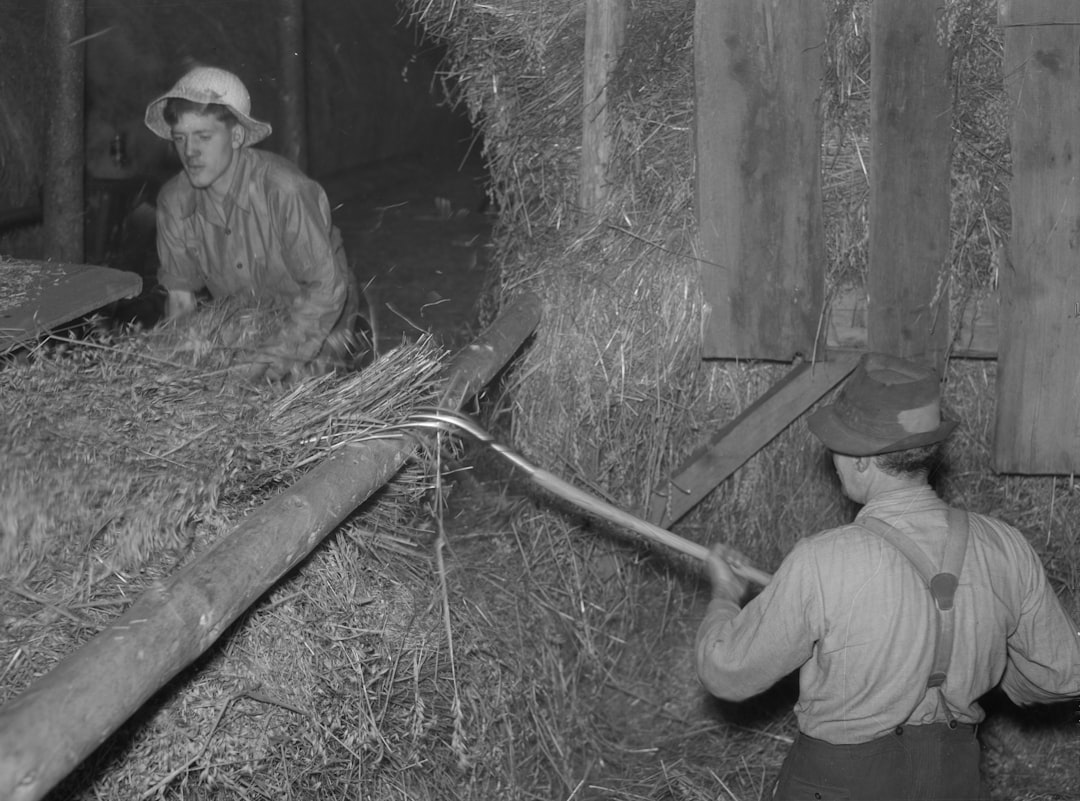Threshing vs. Winnowing
What's the Difference?
Threshing and winnowing are both agricultural processes used to separate grains from their husks or chaff. Threshing involves beating or crushing the harvested crop to loosen the edible part from the inedible part, while winnowing involves tossing the mixture into the air so that the lighter chaff is blown away by the wind, leaving behind the heavier grains. Both processes are essential steps in preparing grains for consumption and have been used for centuries in farming practices around the world.
Comparison

| Attribute | Threshing | Winnowing |
|---|---|---|
| Definition | The process of separating grains from the chaff or husks | The process of separating the lighter chaff from the heavier grains |
| Tools Used | Flail, threshing board, threshing machine | Winnowing fan, winnowing basket, winnowing machine |
| Objective | To separate grains from the chaff | To separate the lighter chaff from the heavier grains |
| Process | Beating or crushing the harvested crop to separate the grains | Throwing the mixture of grains and chaff in the air to let the wind blow away the chaff |
| Efficiency | May not completely separate all grains from the chaff | Effective in separating the chaff from the grains |

Further Detail
Introduction
Threshing and winnowing are two important processes in agriculture that are used to separate grains from their husks or chaff. While both processes are essential for grain production, they have distinct attributes that make them unique. In this article, we will compare the attributes of threshing and winnowing to understand their differences and similarities.
Threshing
Threshing is the process of separating grains from the stalks and husks that surround them. Traditionally, threshing was done by beating the harvested crop with a flail or trampling it with animals. However, modern threshing machines have made this process much more efficient. These machines use rotating drums or paddles to separate the grains from the rest of the plant material.
One of the key attributes of threshing is that it is a mechanical process that requires machinery to be carried out efficiently. This means that threshing can be done on a large scale, making it suitable for commercial grain production. Additionally, threshing is a relatively quick process compared to winnowing, as the machines can separate the grains from the chaff in a matter of minutes.
Another attribute of threshing is that it can be done both before and after winnowing. Some farmers prefer to thresh their grains before winnowing to make the winnowing process easier, while others choose to thresh after winnowing to ensure that all the grains are separated from the chaff. This flexibility makes threshing a versatile process that can be adapted to different farming practices.
Overall, threshing is a crucial step in grain production that helps farmers separate the valuable grains from the rest of the plant material. Its mechanical nature and efficiency make it an essential process for modern agriculture.
Winnowing
Winnowing is the process of separating the lighter chaff from the heavier grains by using the wind or a fan. This process is typically done after threshing, as it is easier to separate the grains from the chaff once the grains have been loosened from the stalks. Winnowing can be done manually by tossing the grains in the air and letting the wind carry away the chaff, or it can be done using a winnowing machine.
One of the key attributes of winnowing is that it is a simple and low-cost process that can be done without the need for expensive machinery. This makes winnowing accessible to small-scale farmers who may not have access to threshing machines. Additionally, winnowing is a traditional practice that has been used for centuries, making it a time-tested method of separating grains from chaff.
Another attribute of winnowing is that it requires a good understanding of wind patterns and airflow. Farmers need to know how to position themselves and their winnowing equipment to take advantage of the wind and ensure that the chaff is blown away from the grains. This skill can take time to develop, but once mastered, it can make the winnowing process much more efficient.
Overall, winnowing is an essential step in grain production that helps farmers separate the valuable grains from the chaff. Its simplicity and low cost make it an attractive option for small-scale farmers, while its reliance on wind power makes it a sustainable and environmentally friendly practice.
Comparison
When comparing threshing and winnowing, it is clear that both processes have their own unique attributes that make them essential for grain production. Threshing is a mechanical process that requires machinery and can be done on a large scale, while winnowing is a simple process that can be done manually and is accessible to small-scale farmers.
One key difference between threshing and winnowing is the equipment required. Threshing machines are expensive and require maintenance, while winnowing can be done with simple tools like a winnowing basket or a fan. This difference in equipment makes threshing more suitable for commercial farmers who can afford the machinery, while winnowing is better suited for small-scale farmers with limited resources.
Another difference between threshing and winnowing is the time and effort required. Threshing machines can separate the grains from the chaff quickly and efficiently, while winnowing may take longer and require more skill to ensure that all the chaff is removed. This difference in time and effort can impact the overall efficiency of the grain production process.
Despite these differences, both threshing and winnowing are essential steps in grain production that help farmers separate the valuable grains from the rest of the plant material. By understanding the attributes of each process, farmers can choose the best method for their specific needs and resources.
Comparisons may contain inaccurate information about people, places, or facts. Please report any issues.